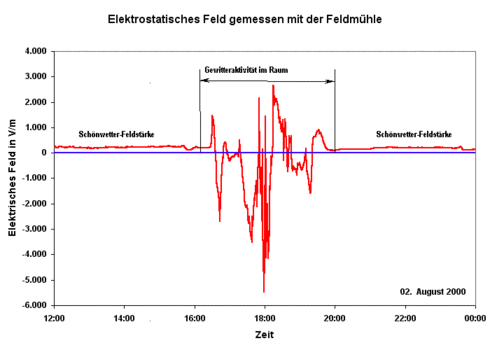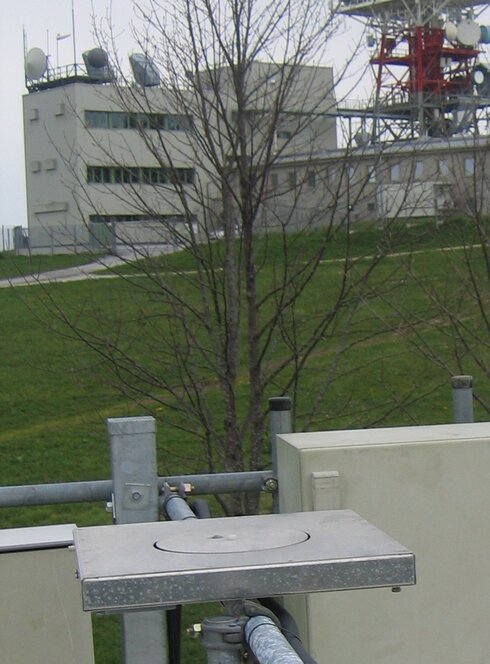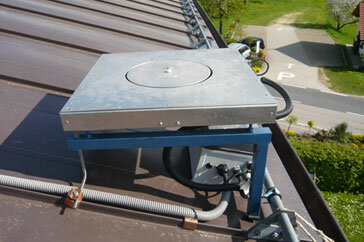Field Measurement
Field Mill
To measure the slowly varying electrostatic field at Gaisberg a so-called field mill is used. The field mill is permanently operated and in normal operation every 60 seconds a reading is recorded. During thunderstorm activity in the Salzburg area, the sampling rate is automatically increased to 10 samples/sec (one measurement every 0.1 seconds).
Without any nearby thunderstorm the so called fair weather electric field is measured. This field is caused by the positively charged ionosphere and is in the order of +130 V/m. When a thunderstorm is approaching or develops on site, the recorded field changes polarity and increases depending on the maturity and location of the thunderstorm cell to values of up to -10.000 V/m. Any time the field increases to values above 3.000 V/m - 5.000 V/m, there is a good chance for the initiation of an upward lightning from Gaisberg Tower.

Waveform Example
This is an example of the measured electrostatic field changes during a thunderstorm in the afternoon of Aug. 2, 2000. The field record shows relatively fast changes of the electrostatic field as a result of rearrangement of charges in the thundercloud caused by the discharges to ground or intracloud.
Flat Plate Antenna

Transient field at close distance
The transient vertical electric field produced by lightning to the tower is measured by using a flat plate antenna with an integrator. The antenna is mounted on a platform about 175 meters distant from the tower base. The recording is triggered by the current measured at the tower top. Trigger signal is received via a fiber optic link between the tower base and the platform and the same fiber cable is used for data transfer.
Current- as well as field-records are GPS time stamped and this allows unambiguous time correlation of measured field pulses with their sources, the measured current pulses in the lightning channel.

Far field measurement
In 2007 the on-site measurement of transient electric field at Gaisberg was extended with a similar station at a distance of about 100 km in order to measure the radiated fields (far field) from the discharges to Gaisberg Tower. These data e.g. allow validation of various return stroke models that are used to calculate the electromagnetic fields radiated by lightning. In this case, both - the exact current waveform at the base of the lightning channel as well as the corresponding field at greater distance (far field) - are known.